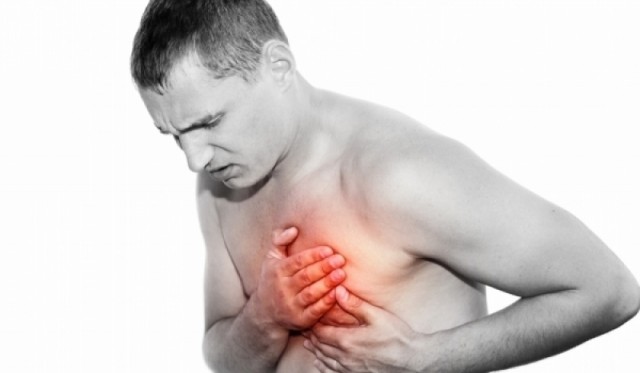Emergency Heart treatment
A HEART ATTACK IS A TRUE EMERGENCY
Description: a heart attack is caused by a clot blocking one of the arteries supplying blood to the heart. This usually comes on suddenly when a fatty ‘plaque’ on the artery wall ruptures and causes the clot to form. In many cases it occurs in people who have had angina caused by narrowing of the artery, but in more than half the cases there is NO warning. When the artery is blocked, a number of events can happen:
- Chest, arm or back pain – usually a heavy crushing feeling usually associated with sweating, nausea, faintness and a feeling of being unwell.
- Breathlessness or faintness due to poor heart function
- Cardiac arrest – the heart fibrillates and stops beating. Unless the patient receives CPR to maintain the circulation, or the heart rhythm is restored, the patient will die in minutes.



What you/paramedics and doctors can do – to save a life.
A heart attack is a true emergency – do not hesitate – call for help, and act!
Prolonged chest pain – if an attack of angina lasts more than 20-30 minutes, then assume it is a heart attack. If it is accompanied by sweating, faintness and feeling unwell – assume it is a heart attack. – CALL FOR HELP – you need to have an ambulance at the scene as soon as possible.
- Dial your local emergency number (111, 911,999 (in most countries all of these go to the emergency operator)), say you have someone with a suspected heart attack and prolonged chest pain and you want an ambulance NOW!
- Put the patient in as comfortable position – lying, sitting or semi lying (he/she will tell you what is best) and try to relax. Sit with the patient and keep calm (or look as if you are calm)
- If available take 1-2 puffs of GTN spray, and repeat every 5 minutes
- Chew an aspirin tablet (300mg) and if you have some a magnesium tablet 800mg.
If the patient collapses unconscious – assume it is a cardiac arrest.
- Check he or she is unconscious – shake shoulder and shout. Check breathing and if you can feel for a pulse in the neck.
- Commence CPR – this has changed recently and is much easier to do – look at this video. Compress the chest down 2 inches or 5 cm (about 100 times per minute) – That is all that is
 necessary. If you have been trained in CPR then mouth to mouth breathing 2 puffs every 30 compressions. Continue till help arrives – DO NOT STOP.
necessary. If you have been trained in CPR then mouth to mouth breathing 2 puffs every 30 compressions. Continue till help arrives – DO NOT STOP. - If an AED (Automated External defibrillator) is available, use this as soon as possible. Watch this video to see what to do – switch on the machine, put on the leads, listen to the instructions – if the patient is in ventricular fibrillation it will say “recommend shock”. Stand back and press the button. It is as simple as ABC, and the sooner the patient is out of ventricular fibrillation, the greater the chance of recovery.
Don’t be frightened to use the AED, they are totally safe and will not make a mistake. By using it- you may save someone’s mum, dad or partner – it is one of the most satisfying medical experience you can have.



Turn on the machine (1) Put the pads on the bare chest. The machine will analyse the trace, then if instructed -you press the red button
